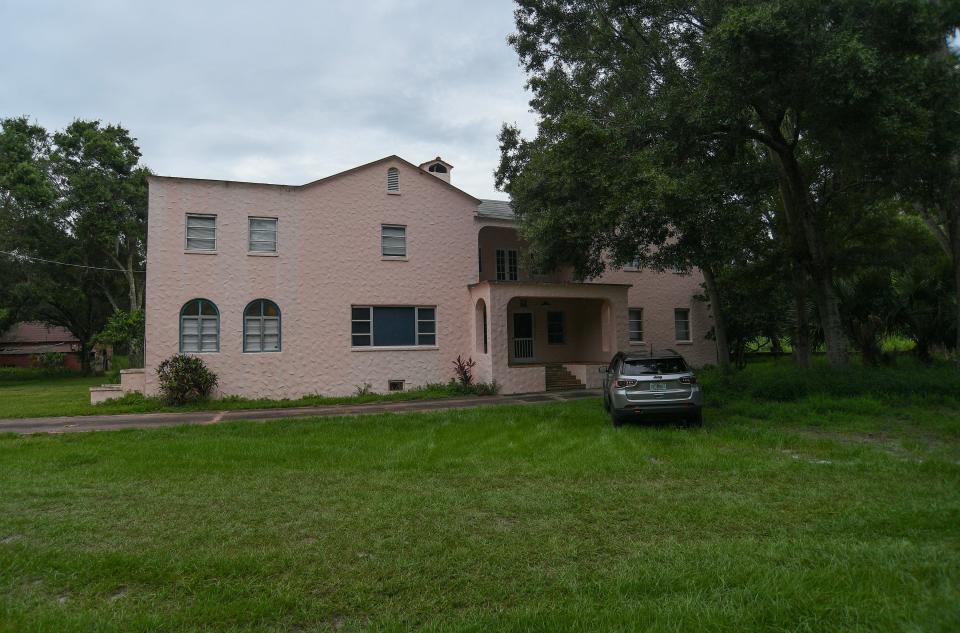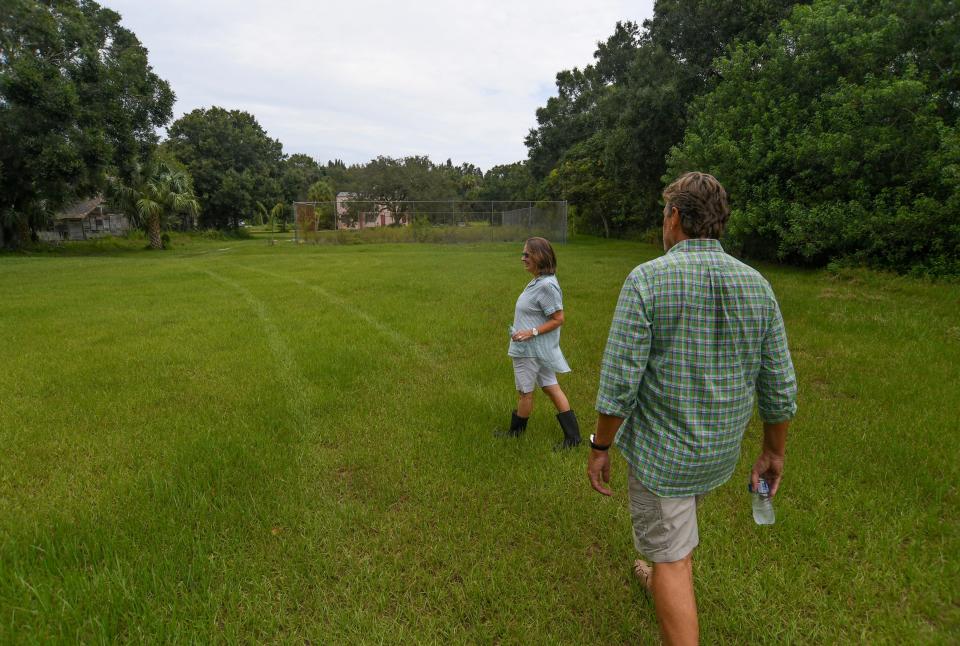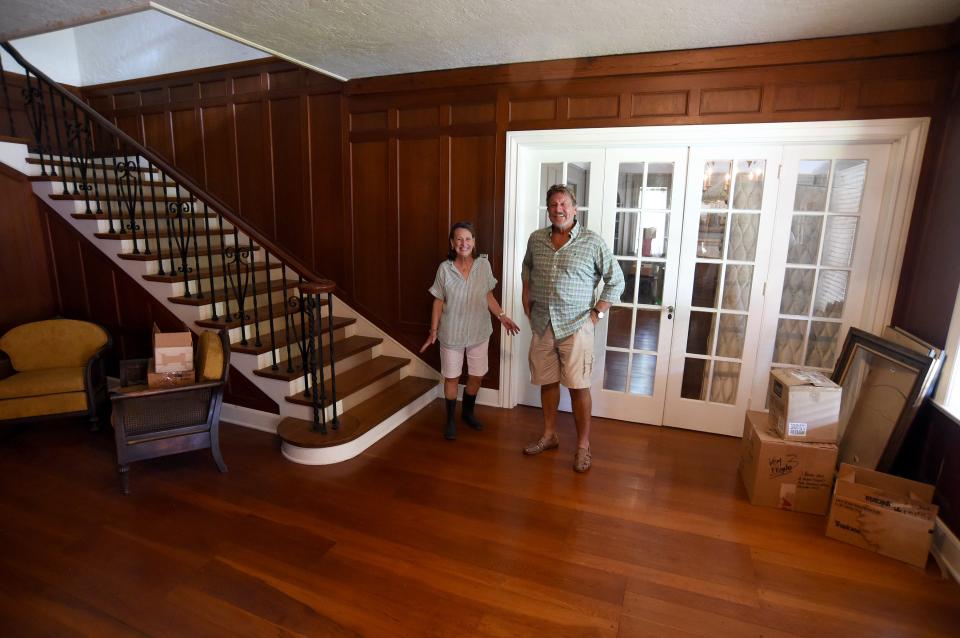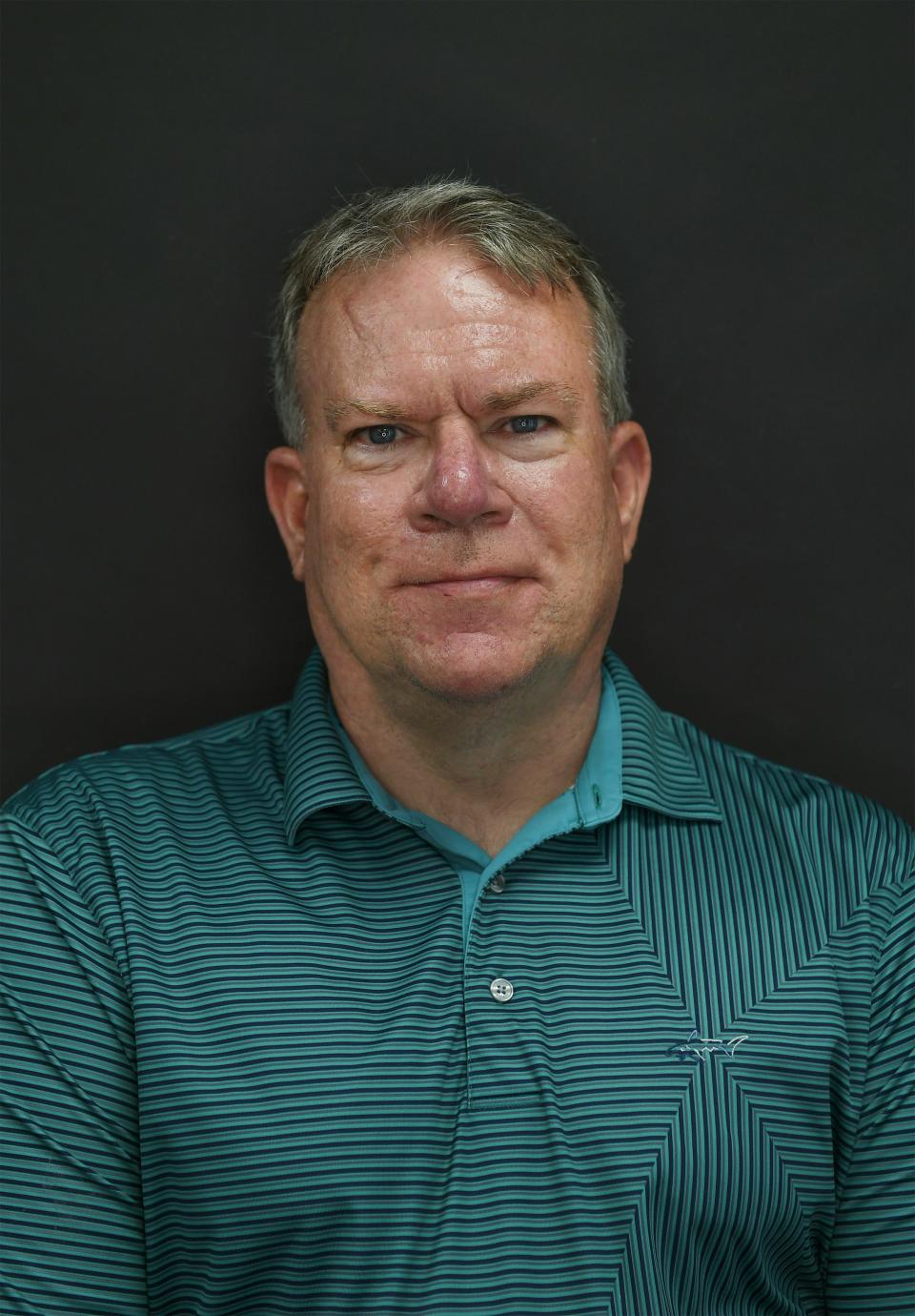Development near Crayon inventor's estate should respect his place in Fort Pierce history
- Oops!Something went wrong.Please try again later.
As one of the inventors of Crayola crayons and dust-free chalk, Edwin Binney was rich and famous long before he and his family moved to the Treasure Coast.
After moving to the area, he played an integral role in developing Fort Pierce's port, saved St. Lucie County Bank from failure during the Great Depression, founded the local Sea Scouts chapter, and donated land that's home to the Fort Pierce Coast Guard Station and the Pelican Yacht Club.
In other words, he was kind of a big deal in these parts a century or so ago.

This is Florida, though, so it shouldn't come as a huge surprise that a development company recently introduced a plan to build apartment buildings that would encircle Florindia Farms, an estate where Binney lived north of Fort Pierce.
The developers want to build 288 apartments on a 33 acres near Indrio Road and Taylor Dairy Road. That property used to belong to the Binney family years ago.
What remains of the Binney estate ― a main house, a smaller home and a barn on 5-plus acres ― is smack dab in the middle of the U that would be formed by the ring of seven apartment buildings.
Members of the St. Lucie Planning and Zoning Commission got a first look at the proposed project last month. And God bless them, they did their jobs.
Although the county planning staff recommended approval, the planning commissioners took a look at the site plan, and its proximity to one of the region's few historic structures, and said: "Hey, wait a minute."
"There are certain things you shouldn't mess with, from a historical perspective," said Commissioner Marty Sanders. "Having fitting and properly scaled structures around that is an important consideration."
Commission member Valerie Slack said the apartment complex, called Indrio Woods, "needs to defer to the scale of the Binney estate." She suggested moving the complex's access road farther away from the estate's property line and increasing the landscaping to shield the historic property from its potential new neighbors.
Slack also suggested the apartment buildings and clubhouse could have an architectural design consistent with the buildings on the Binney estate.
Questions also were raised about drainage from the development site, which is adjacent to a canal running along Taylor Dairy Road, and how the complex's access road could be better aligned to address traffic flow on nearby roads.
Commissioners postponed consideration of the project indefinitely, asking the developers to address the concerns they had raised.

As the son of a former Nashville, Tennessee, planning commissioner, I couldn't have been prouder of the way the commissioners carefully scrutinized the details of the Indrio Woods plans. Local government officials shouldn't just wave sketchy projects through the approval process like bored construction workers trying to keep highway traffic moving.
However, I'm not naive enough to think this is over. Or anywhere close to it.
The developers could return in a month or two with only slightly modified plans that do little to nothing to protect the historic character of Florindia Farms. Even if the planning commission recommends against approving the project, the St. Lucie County Commission will have the final say about whether the plans move forward.
(Christian Bryant, the developer's representative from the West Palm Beach-based Wantman Group, an urban planning firm, didn't return a call, so I have no idea if his clients are amenable to making any changes to their design plans.)
Betting against the developers in St. Lucie County is somewhat akin to betting against the Harlem Globetrotters when they play their eternal foes, the Washington Generals. Although the Generals occasionally pull off a victory, it's not where the smart money goes.
In any case, what's left of the estate is very much worth preserving. Dennis Jurkiewicz and Janie Baugh own the house and the surrounding outbuildings. They are in the process of restoring the main house, which they think was built in either 1923 or 1926.
It has a striking "carnation pink" stucco exterior, with a distinct old Florida feel. Throughout the 6,000-square-foot home, there are hardwood floors, wood-paneled walls and stone fireplaces. The back part of the house is an enclosed "sleeping porch" and there are three balconies overlooking the surrounding property.

There are other cool features, like hidden passageways, strategically placed doorbells (including one under the dining room table) that were used to summon servants, and monogrammed finishes that are reminders of who used to own the property.
In addition to worrying about losing some of the historic character of the area, Baugh and Jurkiewicz are concerned construction near the property line could damage the "Crayola red" barn, contaminate their well water or create drainage problems on their land.
Also watching with interest to what happens with the Indrio Woods project is Sally Chapman, Binney's great-granddaughter, who lives in Vero Beach.
"I don't know what we can do to stop the development around that home," Chapman said. "It's too bad it's not on the National Register of Historic Places."

Personally, I don't know if having a historic designation for the property would prevent development from occurring on adjoining land, although I agree with Chapman the home seems like it should be listed.
I like Slack's idea of trying to have the buildings in Indrio Woods match the architecture of the Binney house (Baugh described the style as masonry vernacular) and creating a landscape buffer between the properties. For that matter, I don't understand why the developers chose to put all of their designated green space on the south side of the apartment complex, as opposed to creating a green belt between Indrio Woods and Florindia Farms.
I also agree with Chapman, who believes the community should pay proper respect to her great-grandfather.
"He was such a prominent person and did so much for the city of Fort Pierce," Chapman said.
This column reflects the opinion of Blake Fontenay. Contact him via email at bfontenay@gannett.com or at 772-232-5424.
This article originally appeared on Treasure Coast Newspapers: Crayon inventor Edwin Binney's SLC home faces development threat

